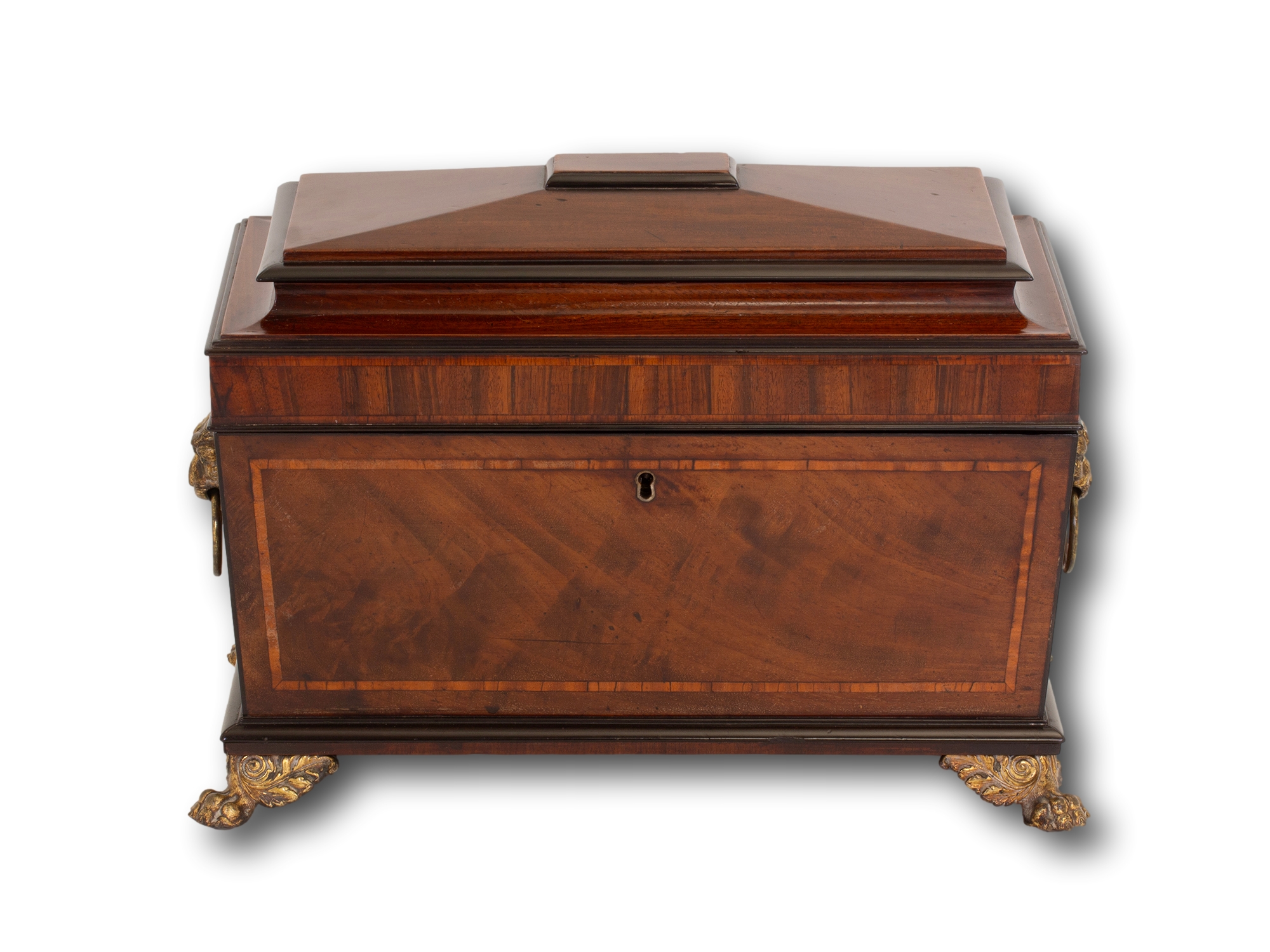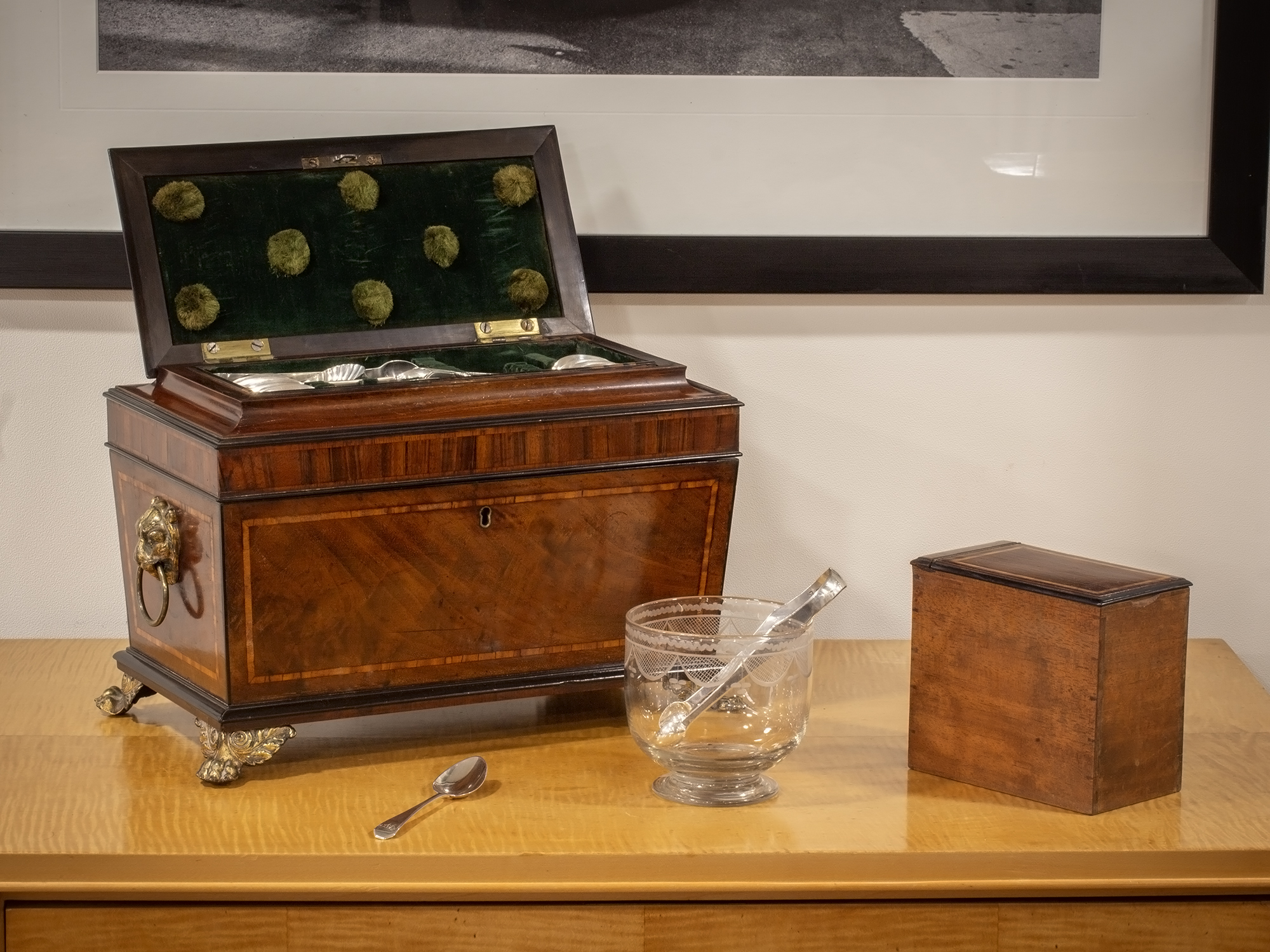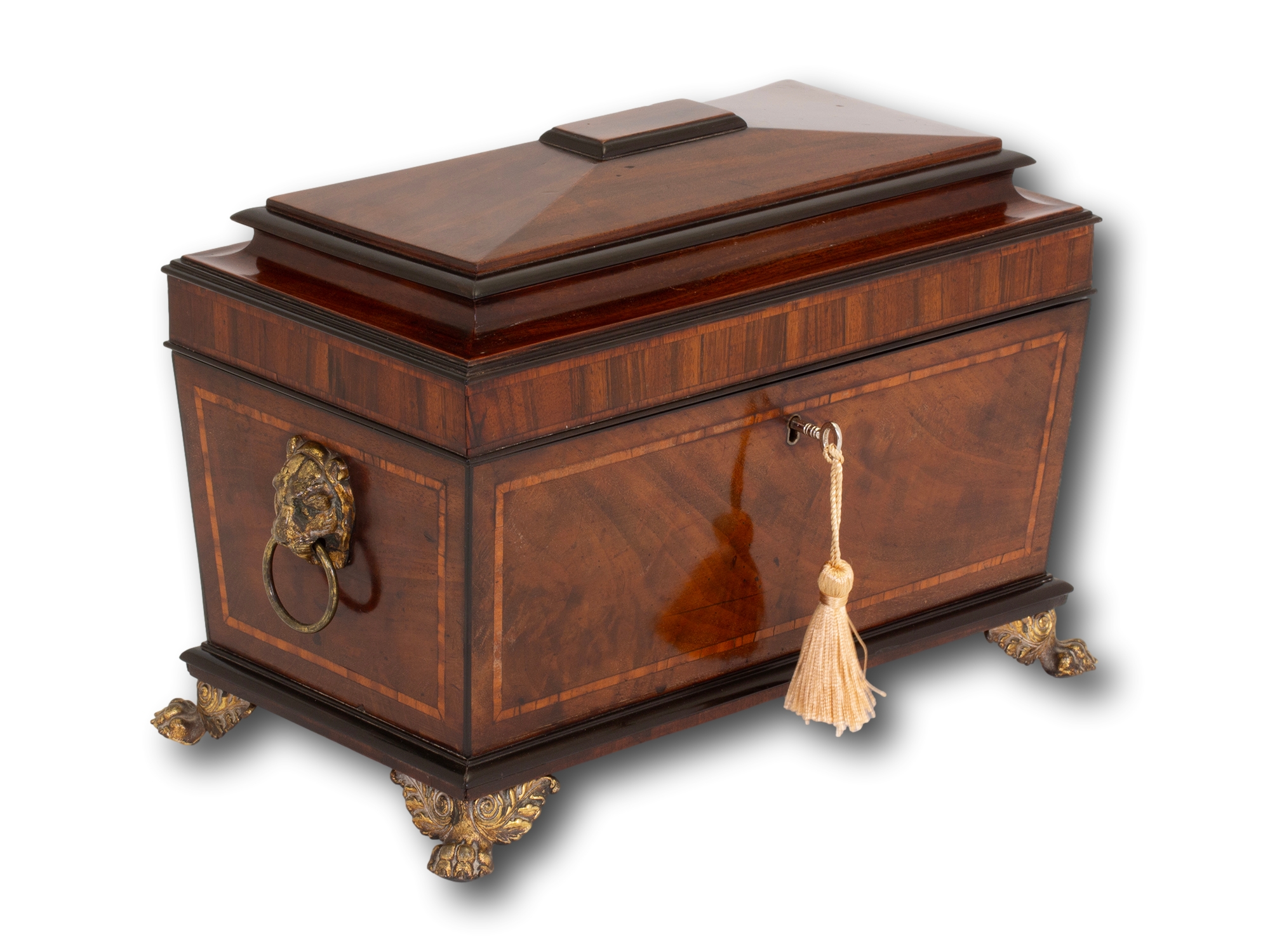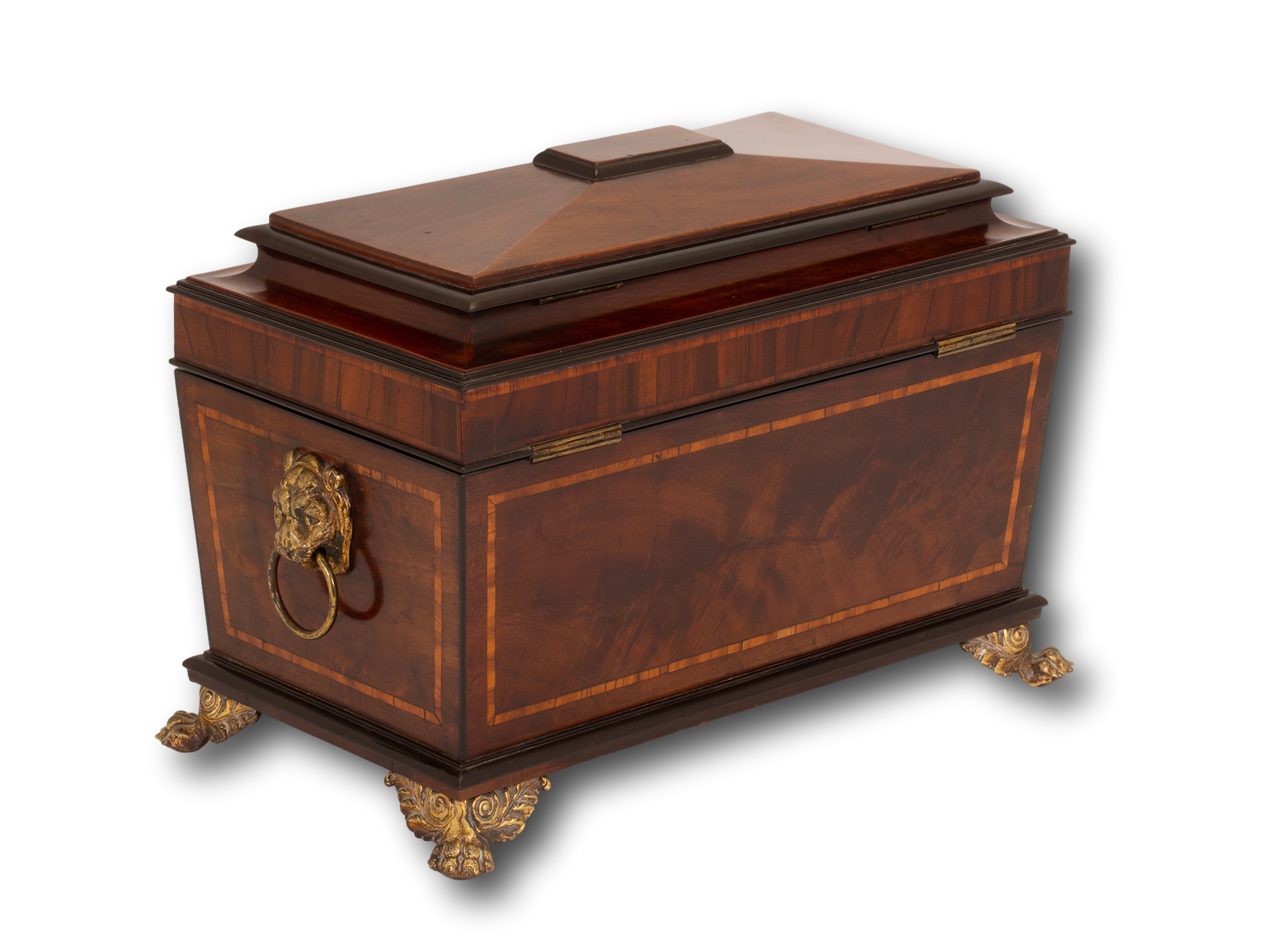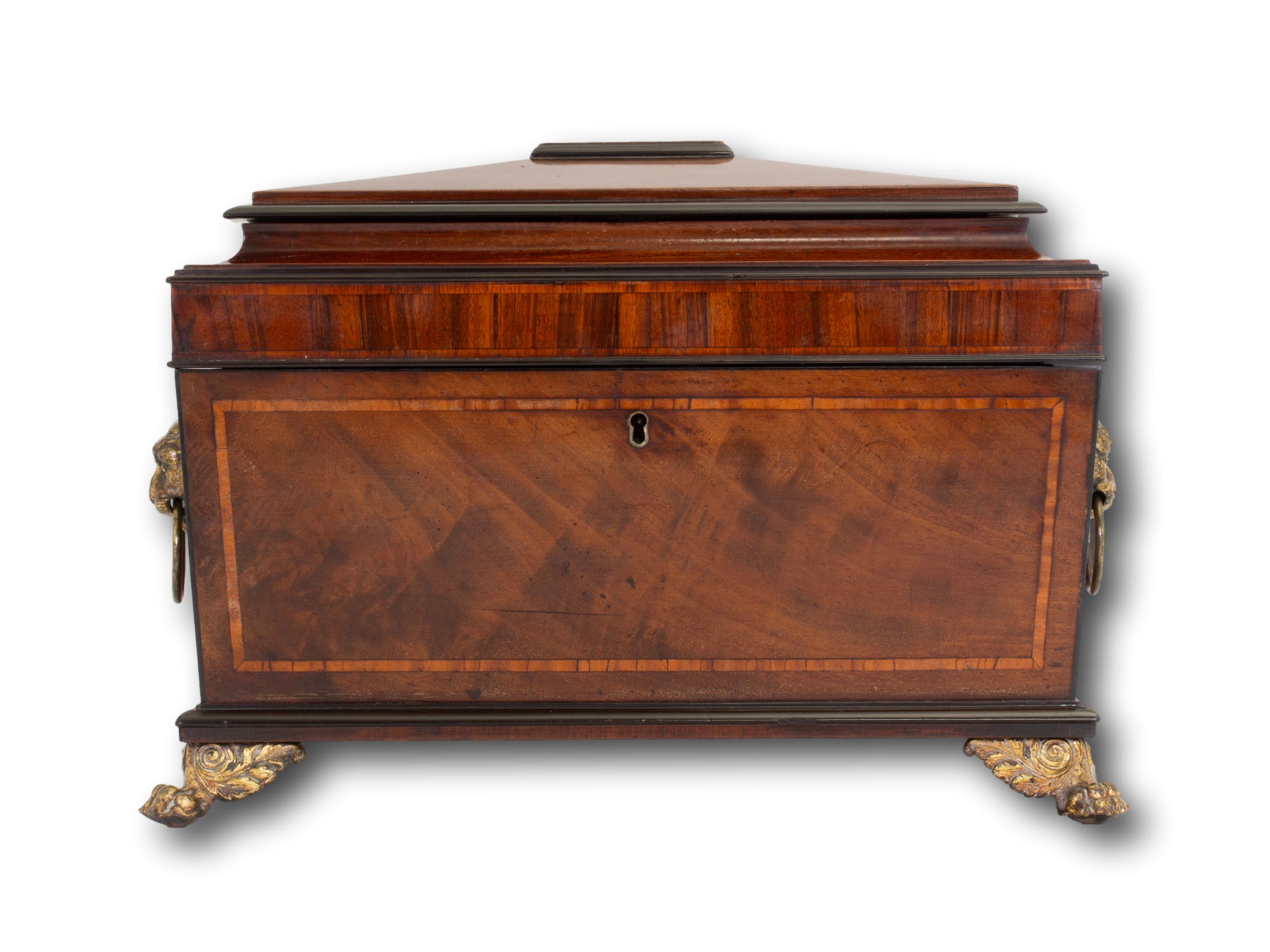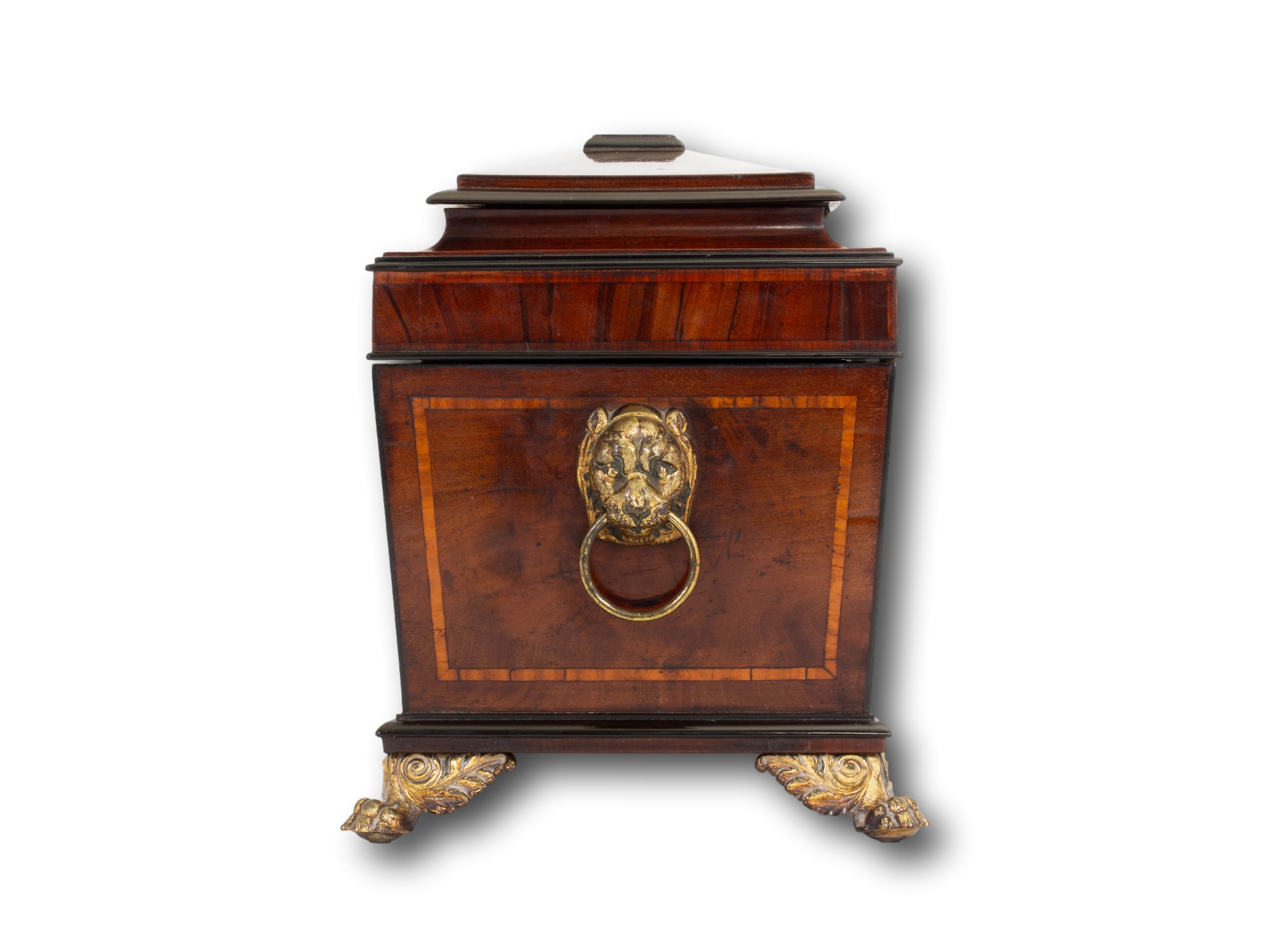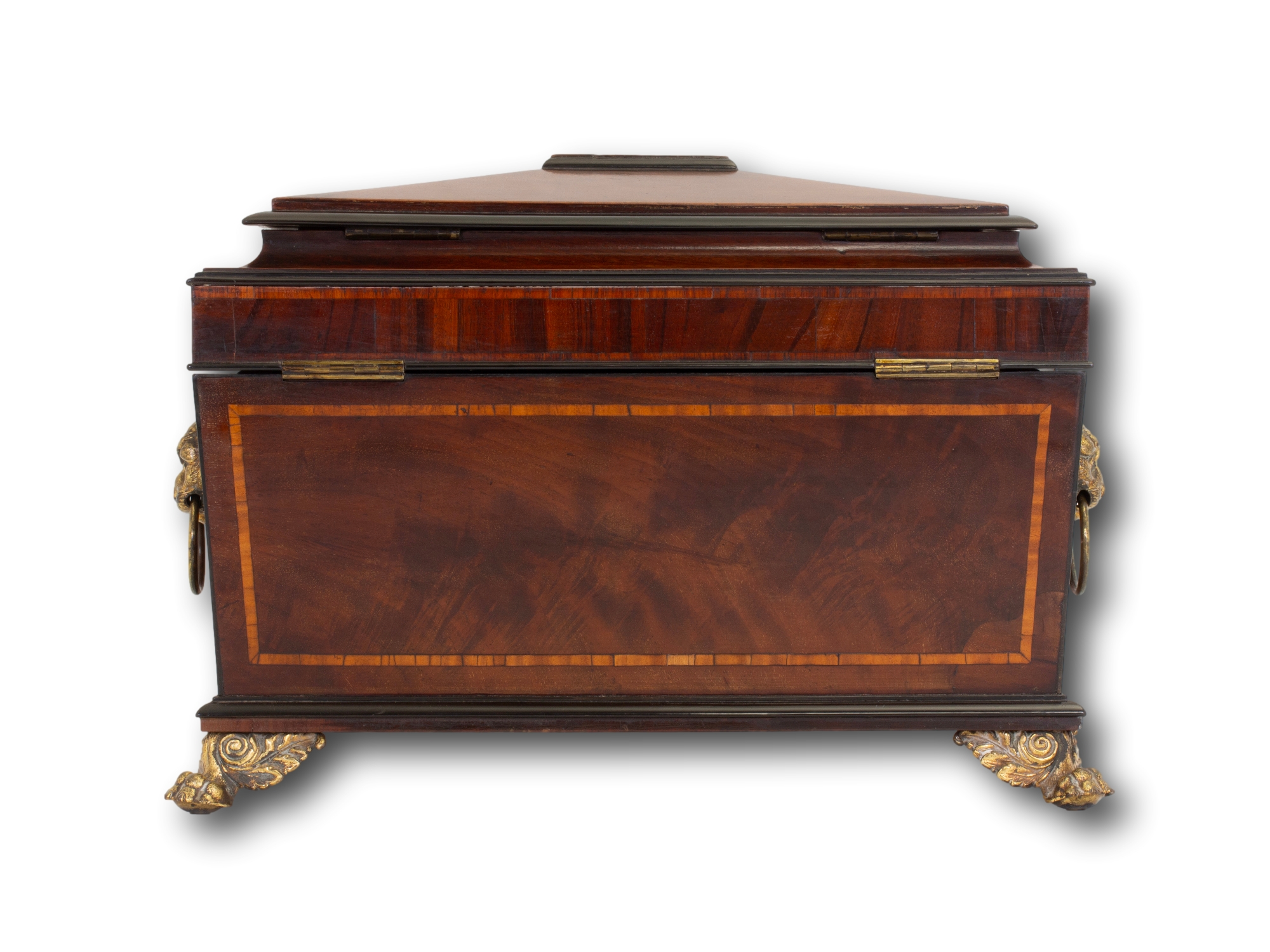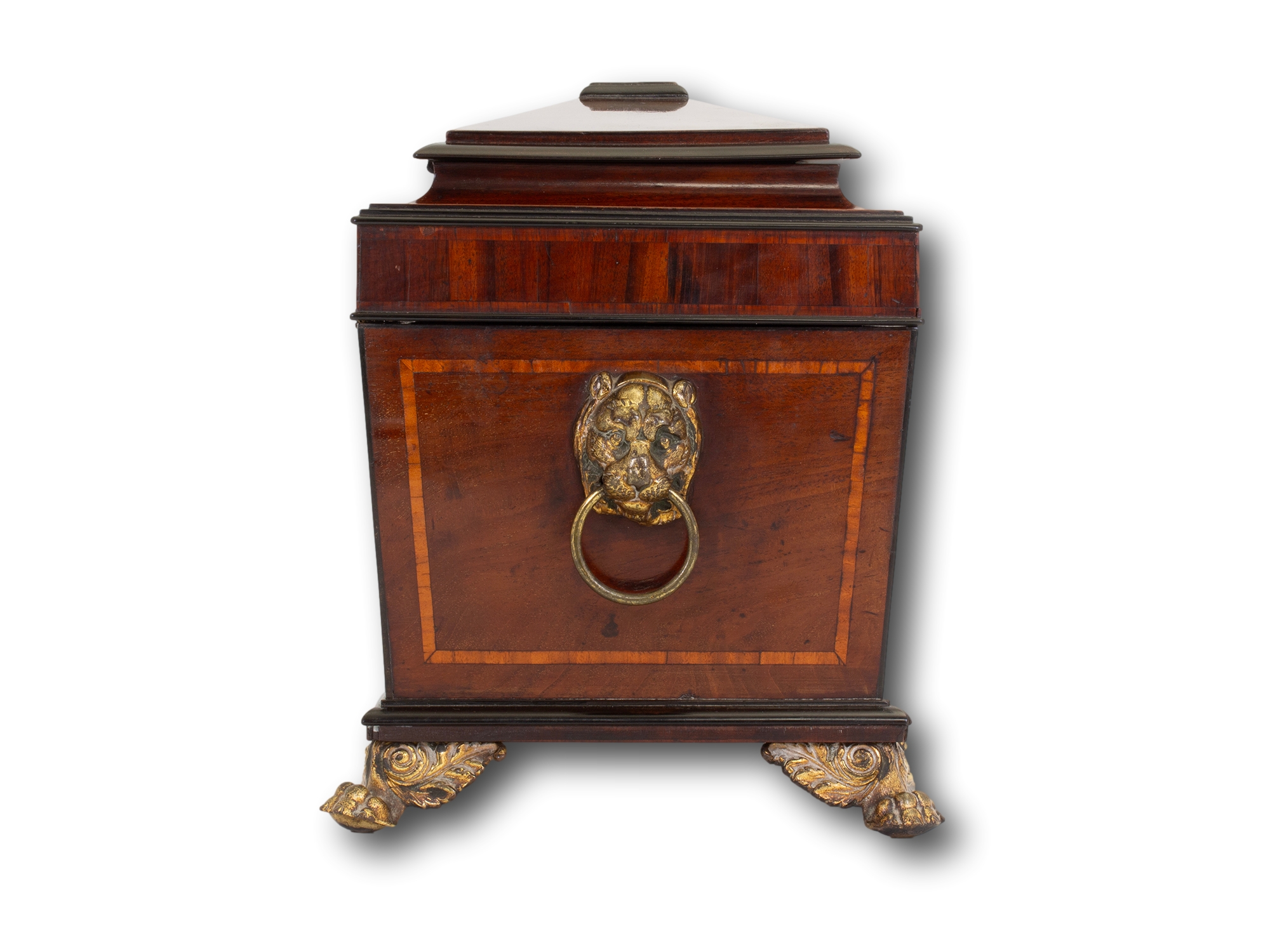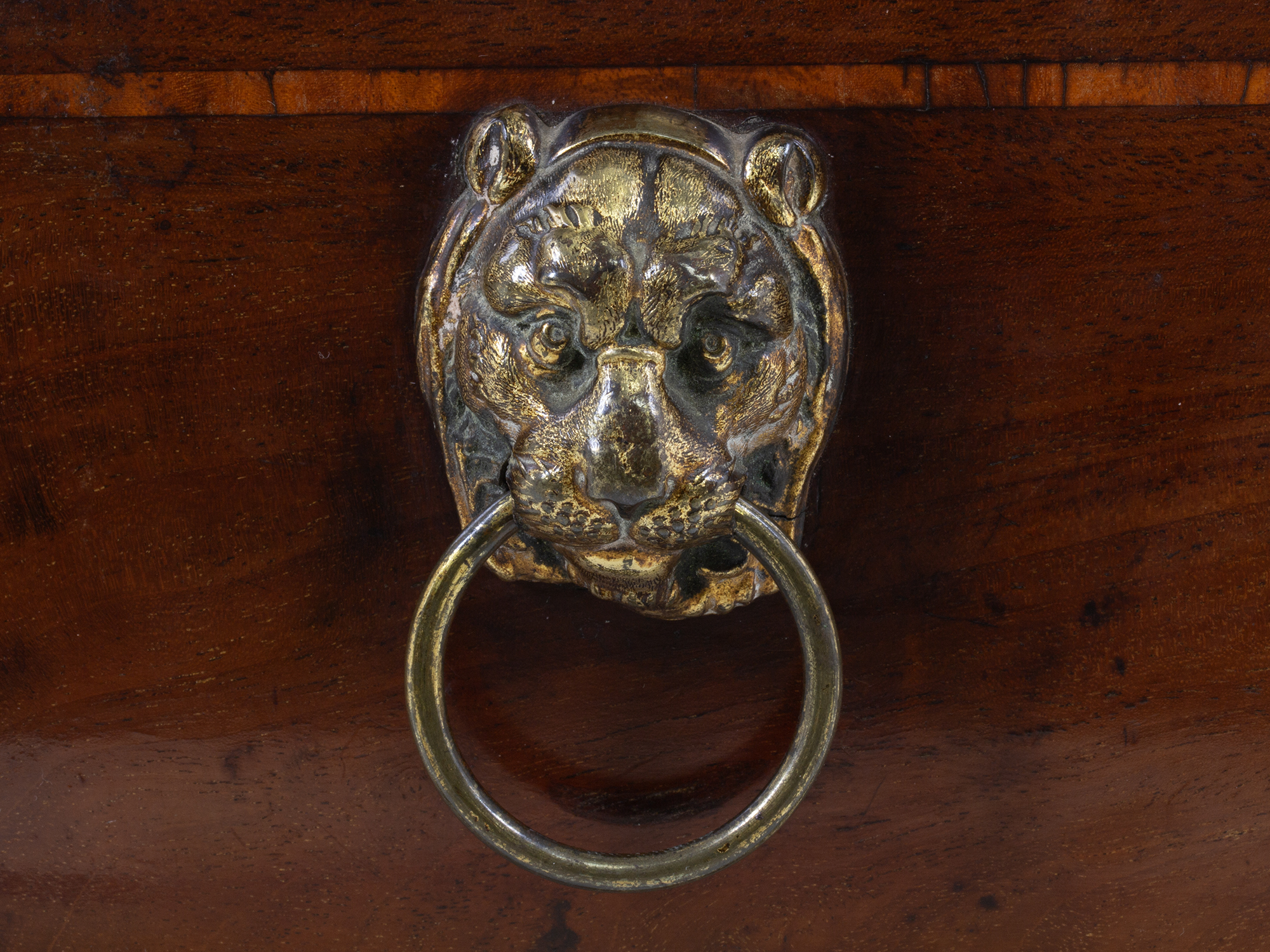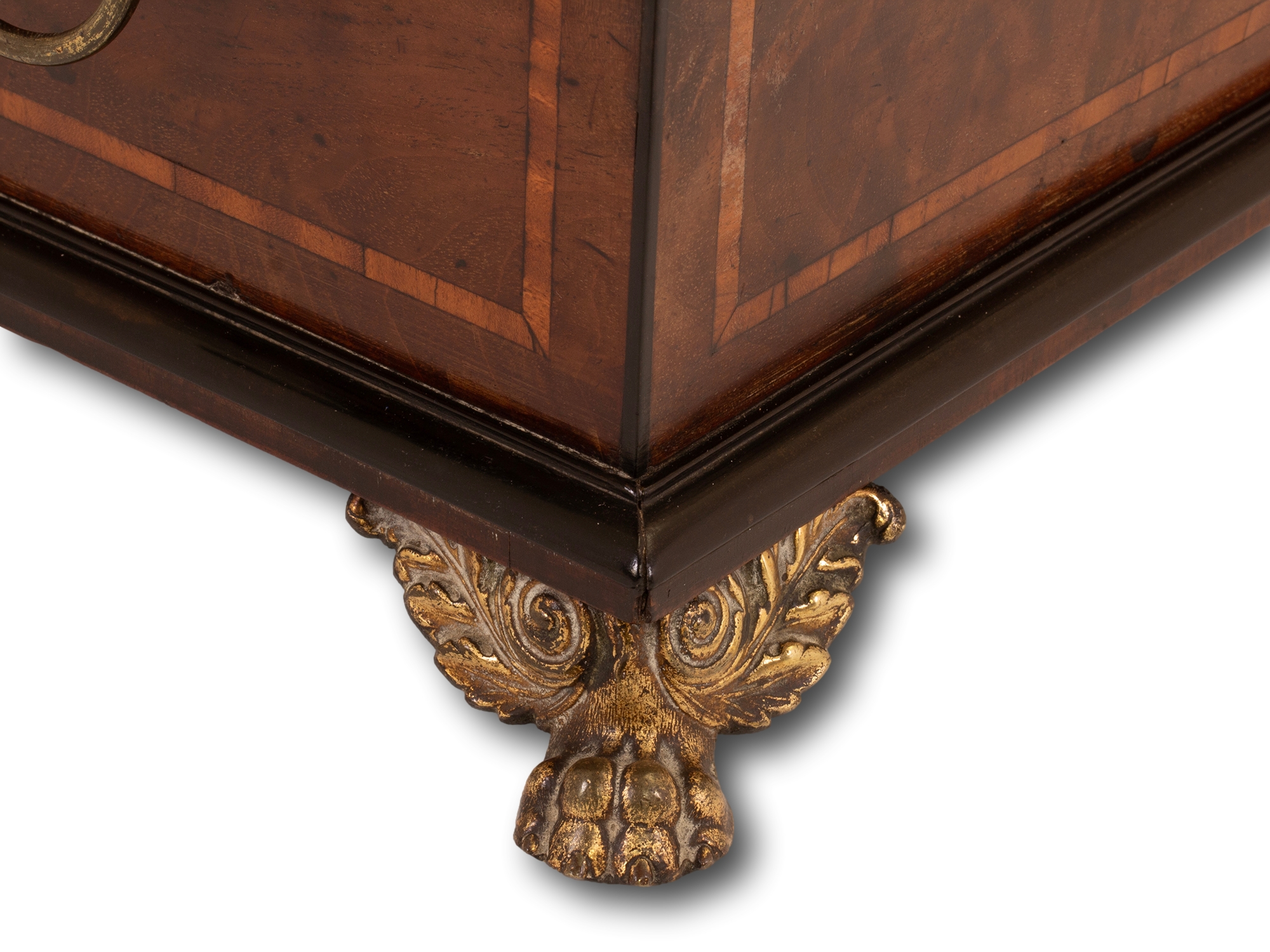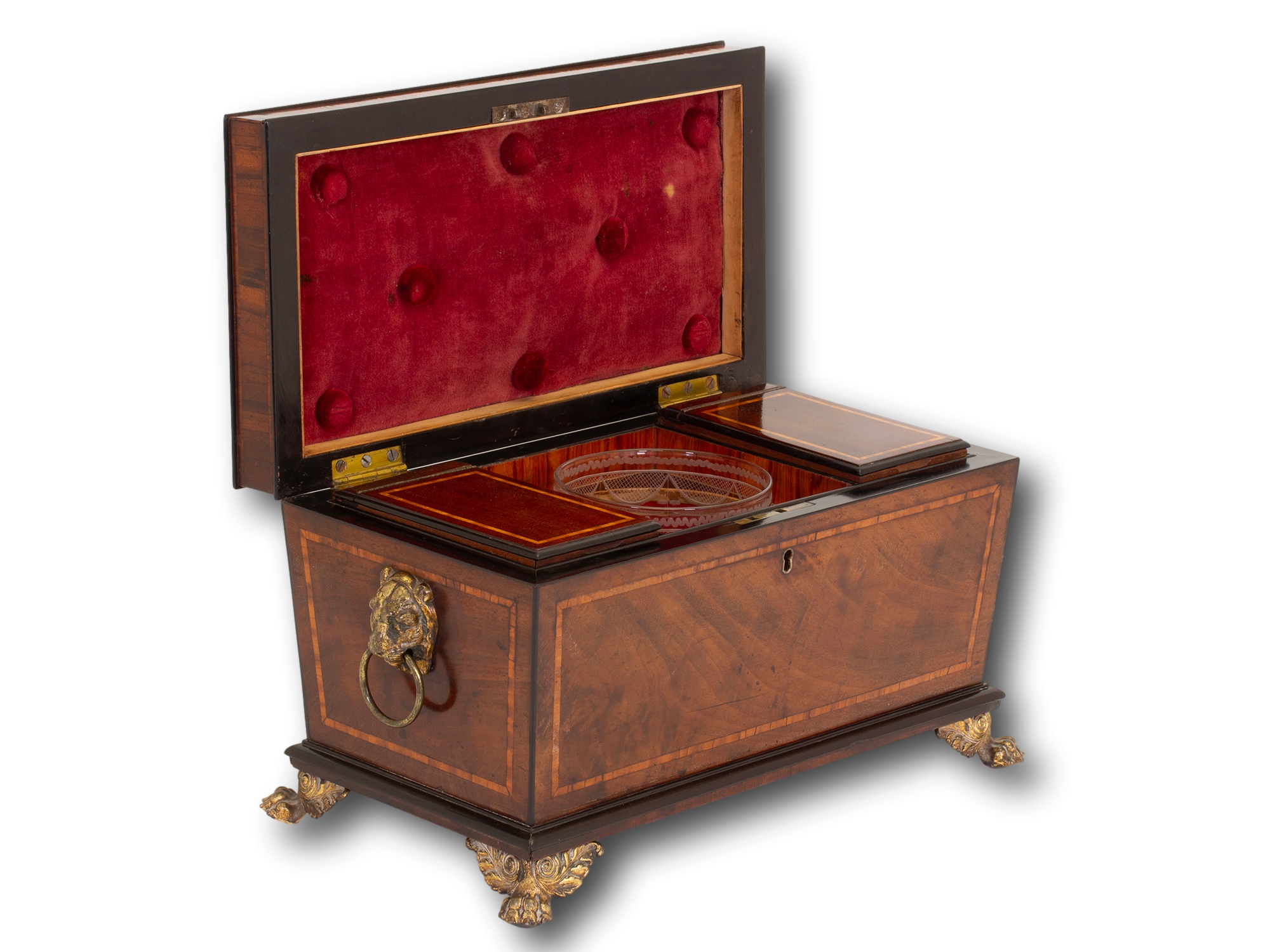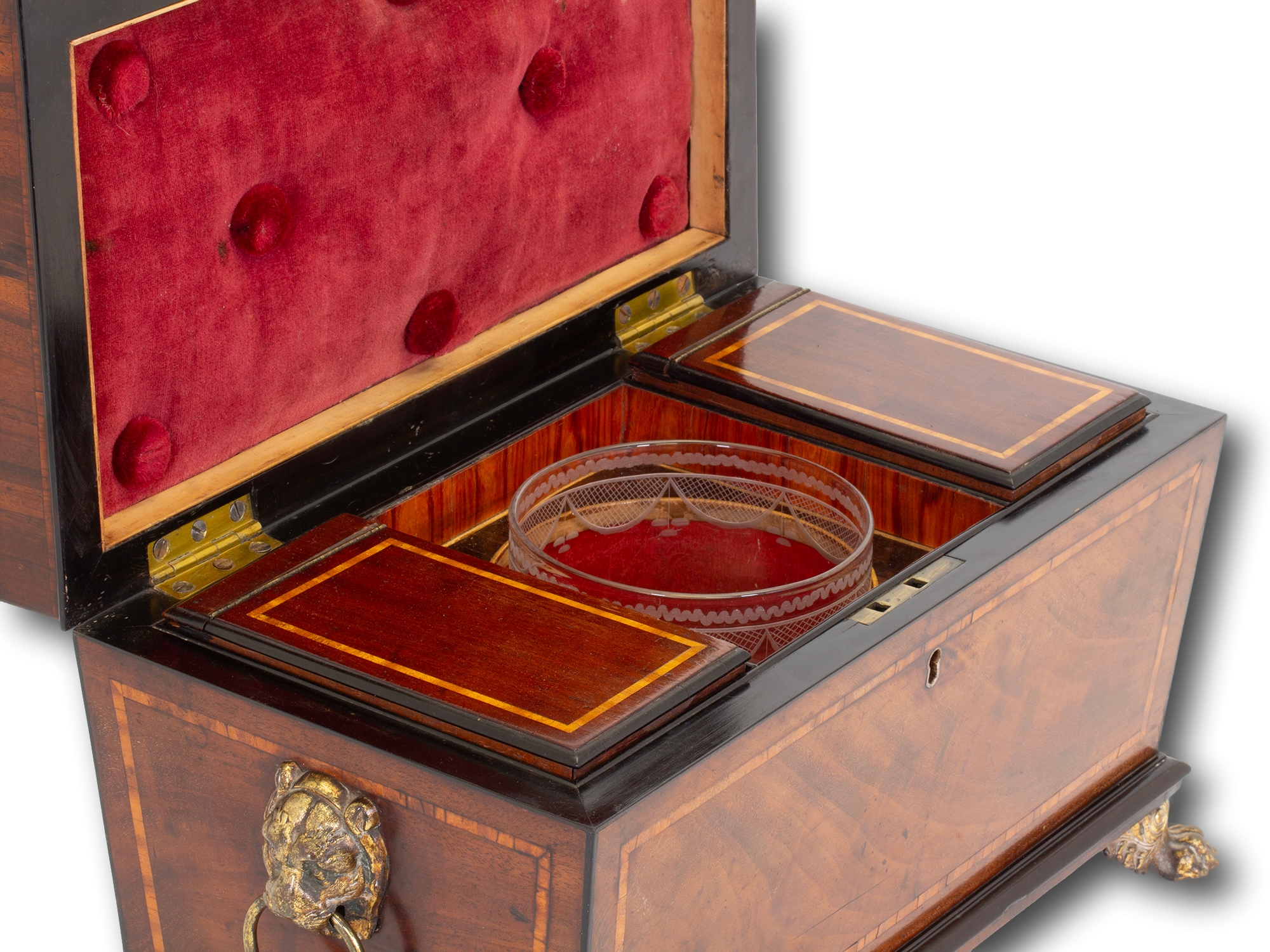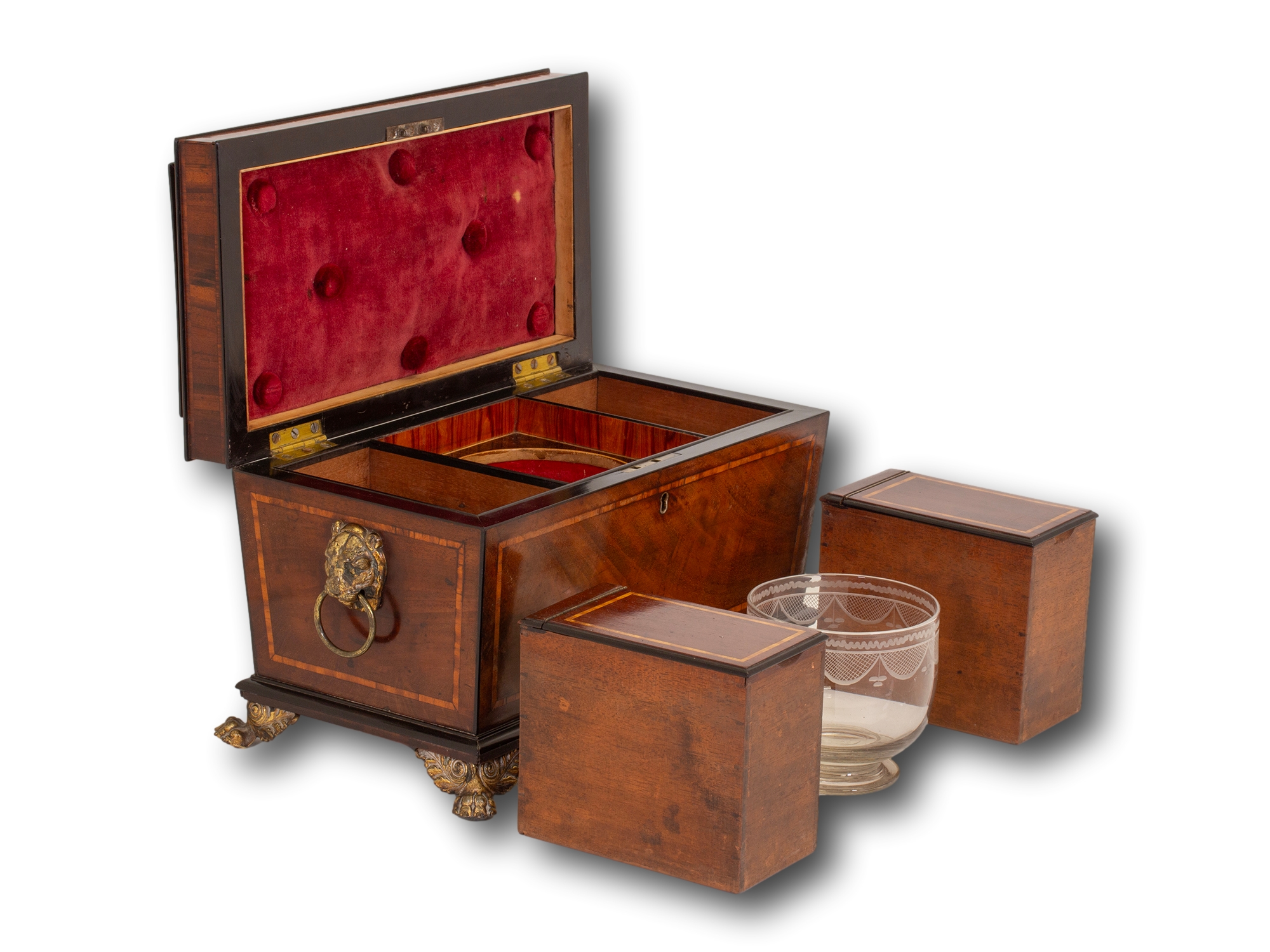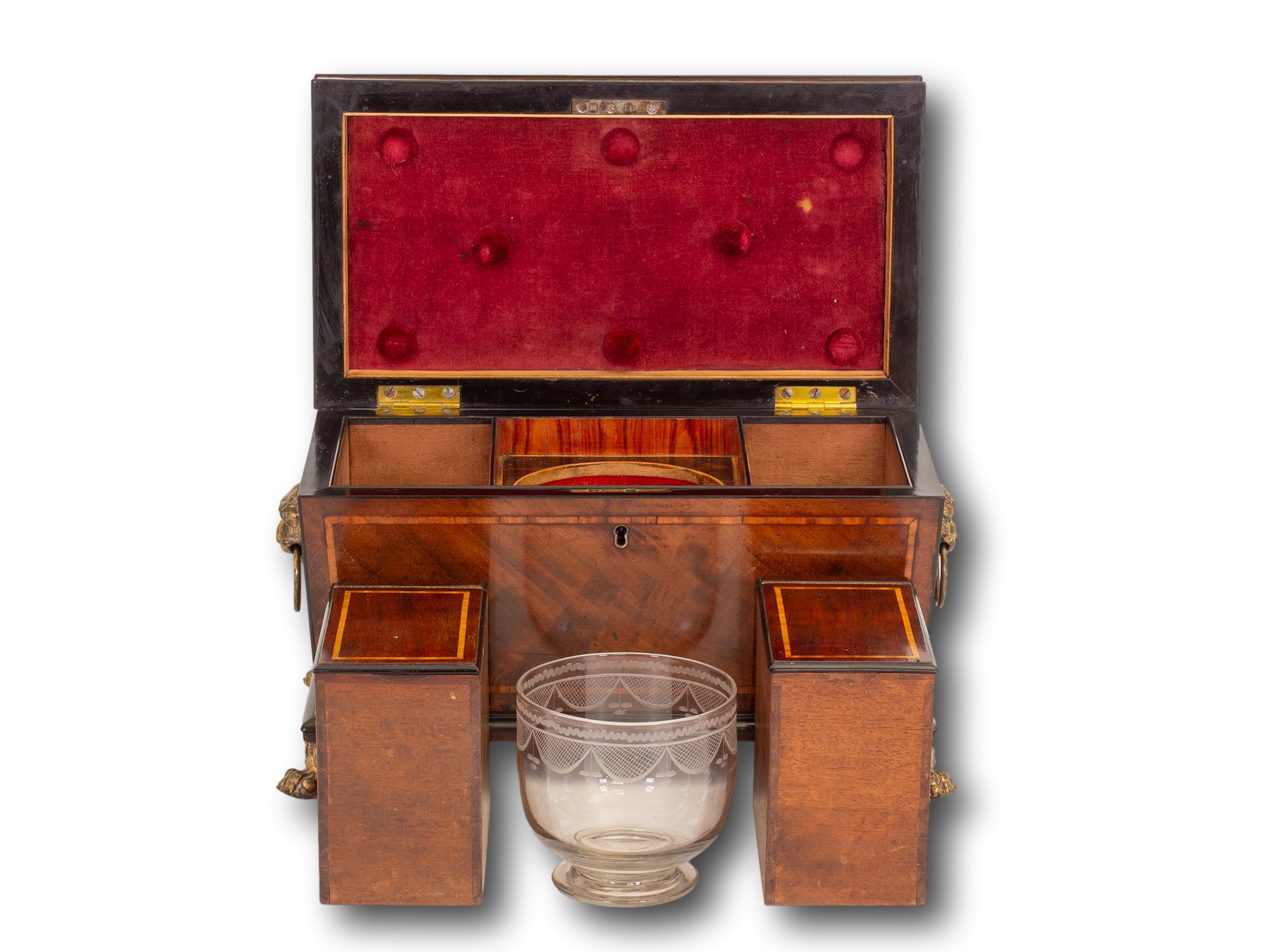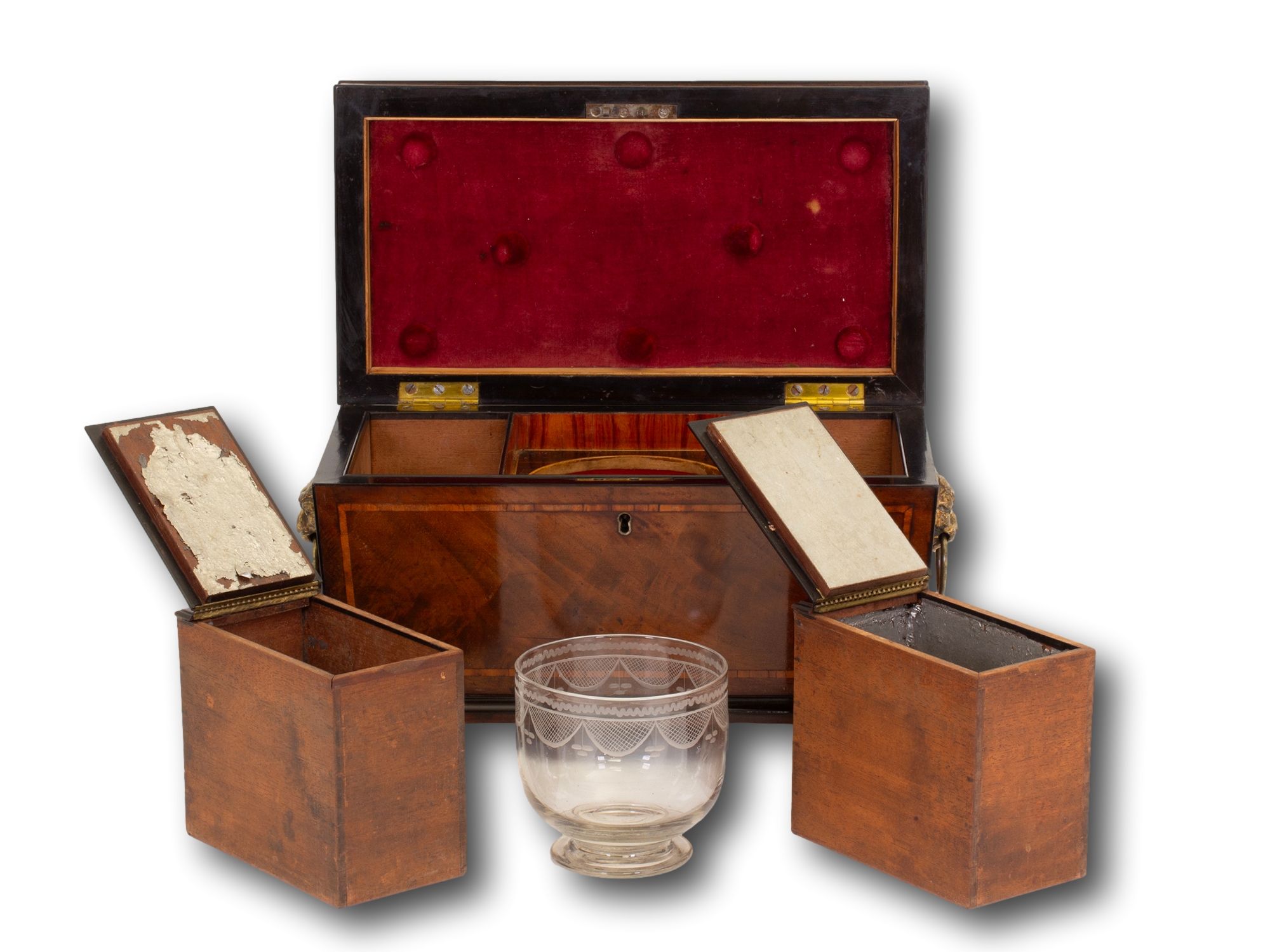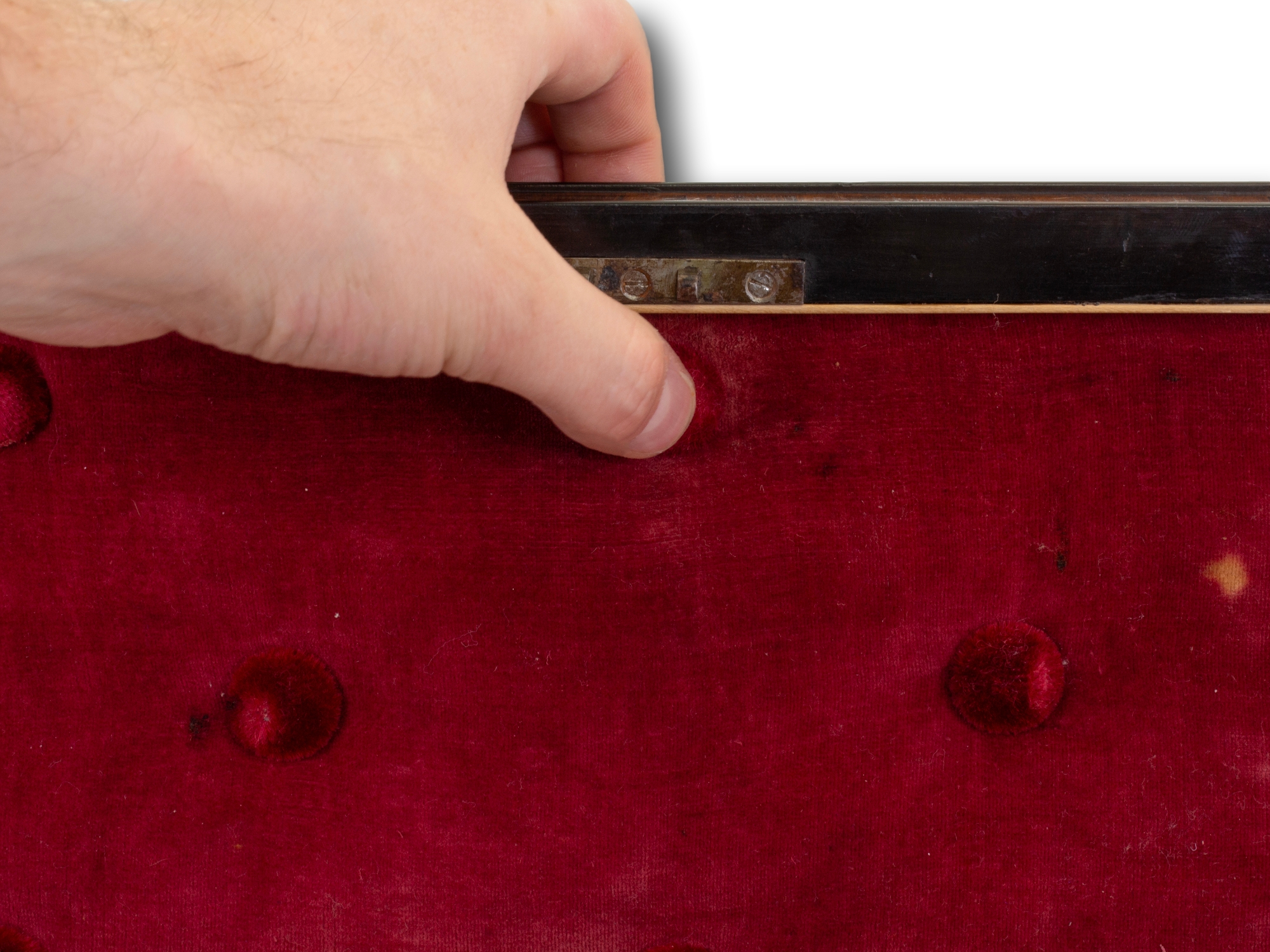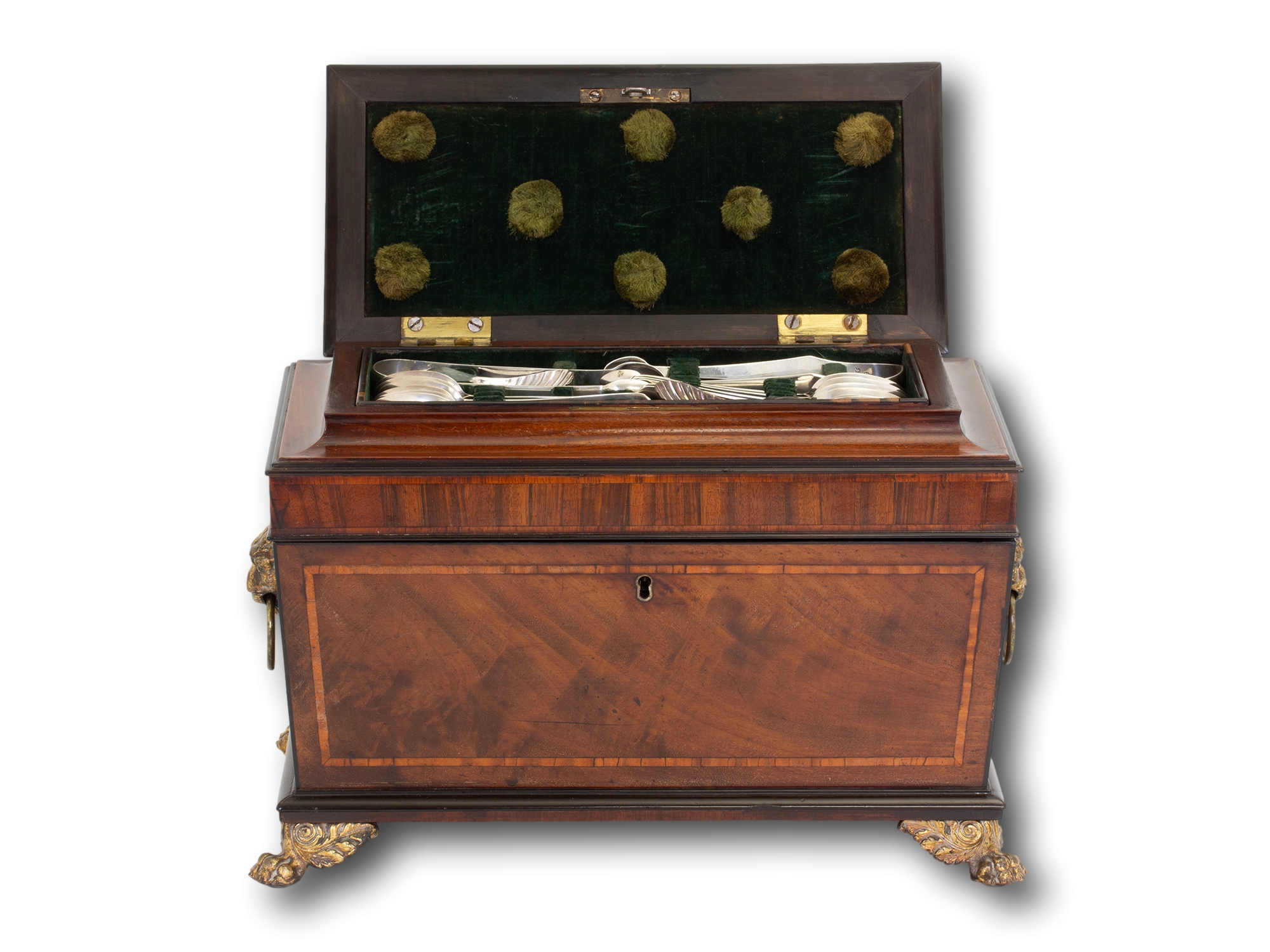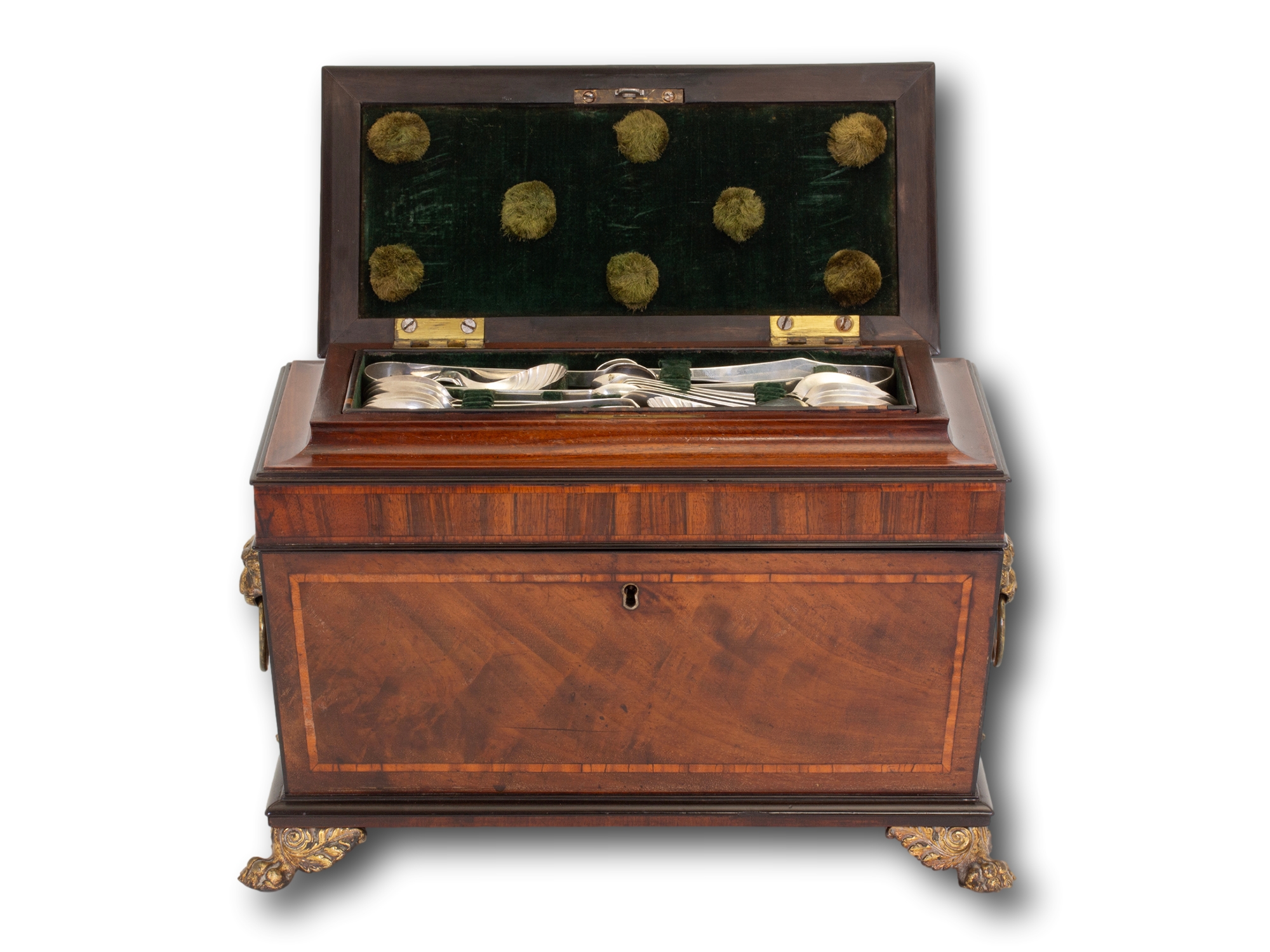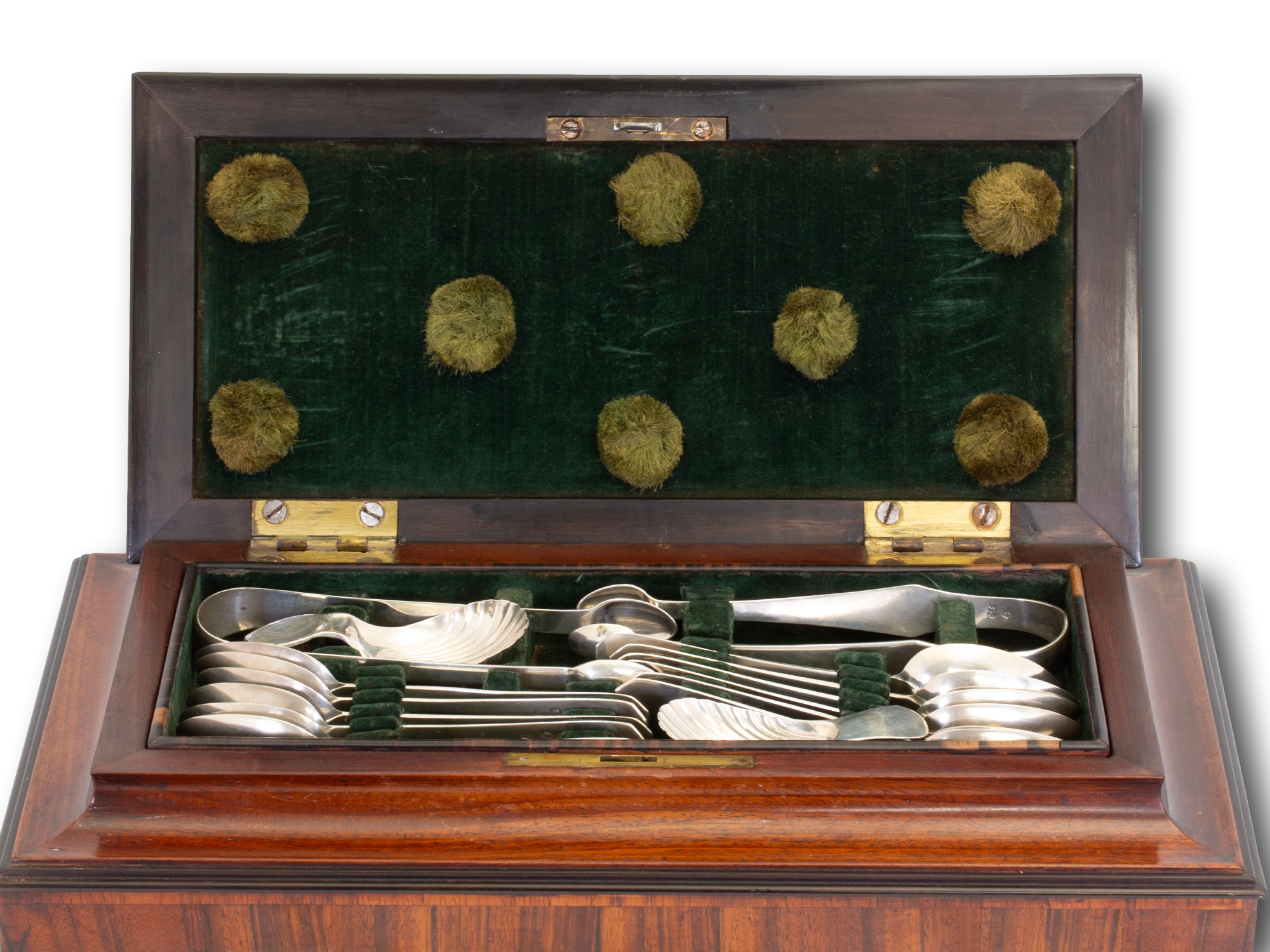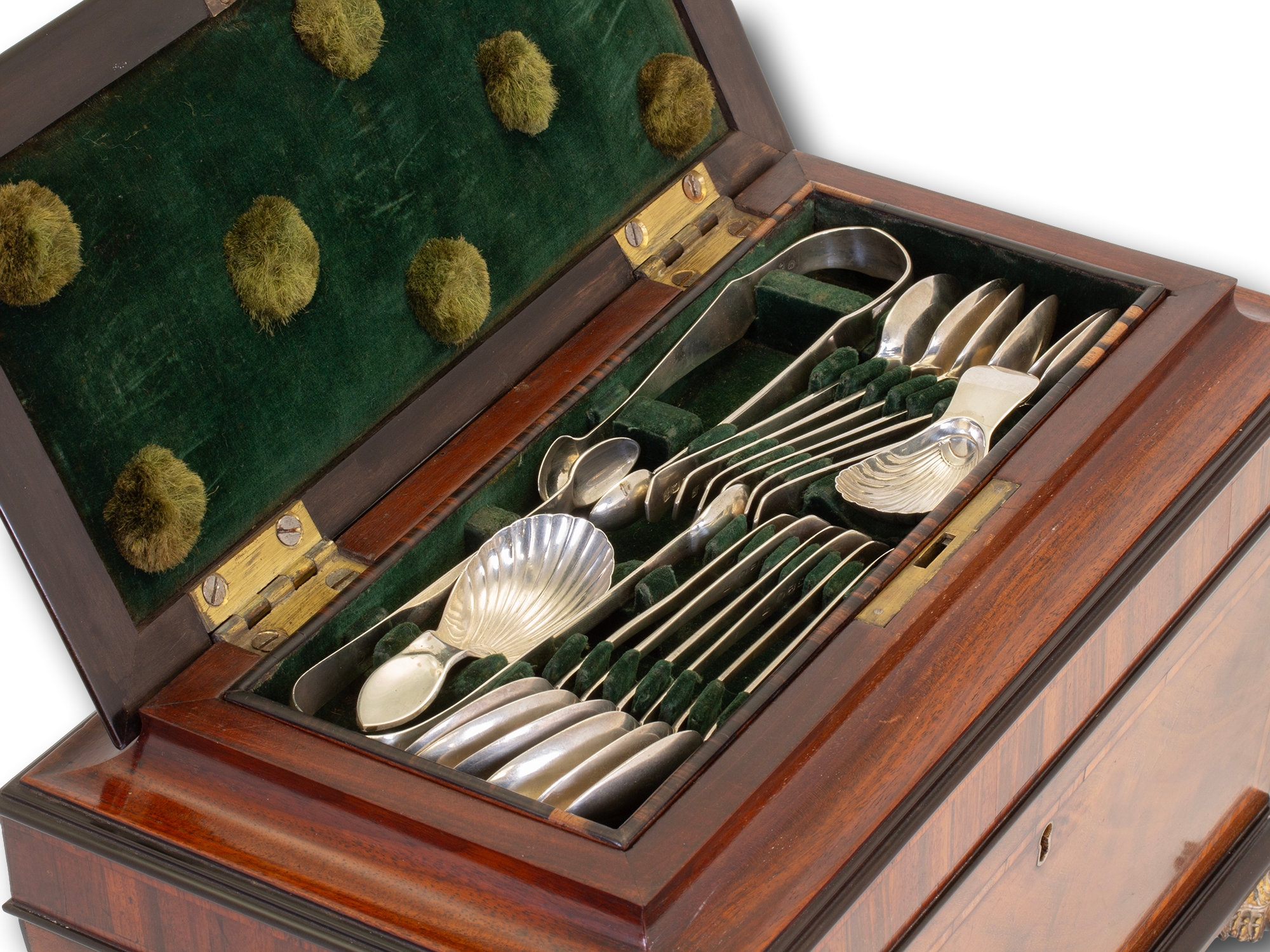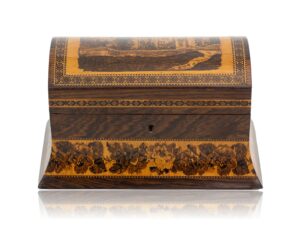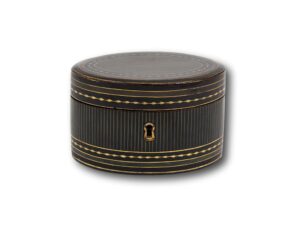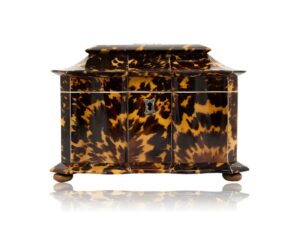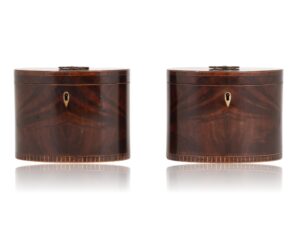Regency Tea Chest with Hidden Spoon Compartment
£3,995.00
Regency Circa 1815 From our Tea Caddy collection, we are pleased to offer this Regency Sarcophagus Tea Chest with Hidden Spoon Compartment. The Tea Chest of sarcophagus shape raised upon acanthus winged lion pad feet, is beautifully decorated to the... Read More
Secret Silver Spoon Compartment

| Dimensions | 36 × 20 × 25 cm |
|---|---|
| Country | |
| Medium | Brass, Coromandel, Ebony, Mahogany, Satinwood, Silver, Sterling Silver, Goncalo Alves |
| Period | |
| Year | |
| SKU | 501416-ZMEEX |
Description
Description
Regency Circa 1815
From our Tea Caddy collection, we are pleased to offer this Regency Sarcophagus Tea Chest with Hidden Spoon Compartment. The Tea Chest of sarcophagus shape raised upon acanthus winged lion pad feet, is beautifully decorated to the exterior with large tapered figured panels of veneered Mahogany with Satinwood crossbanded framing. The Tea Chest with an Ebony plinth base, a band of exotic crossbanded Goncalo Alves wood framed by further crossbanded Goncalo Alves. The top of the Tea Chest has a raised convex lit with a faceted top and rectangular finial and if finished with twin loop lion mask handles, one to each side. The interior of the Tea Chest features a cushioned velvet inner lid, two removable tea caddies with matching Mahogany and Satinwood veneers and a glass sugar bowl which is surrounded by a Coromandel mount bordered by Tulipwood. The Tea Chest has a secret compartment which is hidden in the convex lid, the compartment can be accessed by pushing a hidden button behind the velvet inner lining at the central top pompom. When pressed down a catch unlocks a hidden removable spoon compartment with a coromandel edging. The removable tray is filled with sterling silver spoons and tongs totalling 16 pieces. The twelve spoons are dated 1812, the two caddy spoons are by Nathaniel Smith & Company dated 1796 and Richard Mordan & Co 1788 and finally the two sugar tongs are hallmarked with Georgian hallmarks circa 1800. The Tea Chest dates to the Regency period early 19th century during the reign of the Prince Regent George circa 1815. We believe this is a unique Tea Chest with the hidden cutlery compartment and a rare model one of only two we have owned.
The Tea Chest comes complete with a working lock and tasselled key.
Measurements ( Inches) 9.85 High x 14.2 Wide x 7.9 Deep
Mahogany is the name given to many types of tropical hardwood and can be found in Africa, India and South America, most of which are a red-brown colour with a fine, even grain. This makes it easily workable and gives it a durable finish which attributes to its popularity with many kinds of furniture.
Satinwood is found in India and Sri Lanka. It has a rich golden colour and an almost reflective sheen. Satinwood is traditionally used for high quality furniture.
Goncalo Alves also known as tigerwood, jobillo, muiracatiara is a hardwood native to south america. The heartwood is typically a medium reddish brown with irregularly spaced streaks of dark brown to black. Color tends to darken with age. Some pieces of goncalo alves may be completely uniform in color with no streaks or stripes.
Coromandel is a valuable wood found in India, Sri Lanka and South East Asia. It has a contrasting hazel-brown colour with black grain. It is a dense, heavy wood that is so popular it has been logged to extinction over the last few hundred years. This makes Coromandel pieces even more special.
Ebony is often almost completely black with very little visible grain often with a subtle red/purple hue. This wood is very expensive due to the slow-growing trees which can often be gnarly affecting the yield of straight workable wood. Most ebonies are very dense making work with hand tools very difficult and can quickly clunt cutting tools. This density however offers an excellent finish on turned items.
Regency is an era of British history between 1811 and 1820. The Regency era was initiated by King George III first suffered a debilitating illness in the late 1780s. He relapsed into his mental illness in 1810 and by the Regency Act in 1811 his eldest son George, Prince of Wales, was appointed prince regent to discharge royal functions. When George III died in 1820, the Prince Regent succeeded him as George IV.
Every purchase made from Mark Goodger Antiques is accompanied by a comprehensive suite of documents to ensure your satisfaction and peace of mind. This includes our latest catalogue, a Certificate of Authenticity, detailed care instructions for your chosen item, and an independent invoice for insurance purposes. Additionally, your purchase is protected by our no-hassle, money-back policy, and your item will be fully insured during the shipping process to safeguard against damage or loss.
Additional information
Additional information
| Dimensions | 36 × 20 × 25 cm |
|---|---|
| Country | |
| Medium | Brass, Coromandel, Ebony, Mahogany, Satinwood, Silver, Sterling Silver, Goncalo Alves |
| Period | |
| Year | |
| SKU | 501416-ZMEEX |
